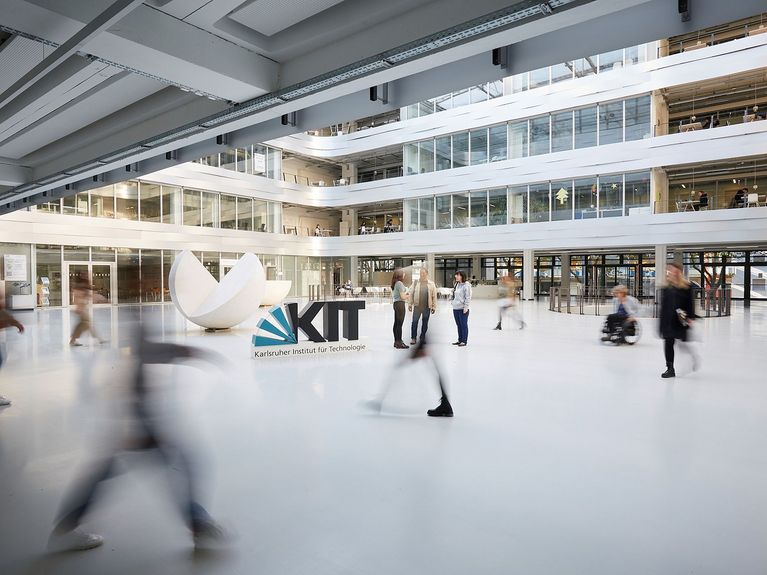
Story #05
KIT – The Research University Within the Helmholtz Association
Agile as a university, but a real heavyweight when it comes to research: when it founded Karlsruhe Institute of Technology (KIT), Helmholtz entered uncharted territory. Today, KIT is one of Germany’s most important research centers – for students and experts alike.
The origin of Karlsruhe Institute of Technology (KIT) can be traced back to the Excellence Initiative launched by Germany’s federal and state governments: in 2006, the University of Karlsruhe was one of only three German institutions to be certified as an Excellence University. Its concept for the future focused on a fusion with Forschungszentrum Karlsruhe, a federally operated institution that had been part of Helmholtz since 2002.
What at first seemed virtually impossible – combining a university funded by the State of Baden-Württemberg and a federally financed, major research facility – would become the most ambitious project on the German research landscape. In fact, it overcame the separation between academic and non-academic research: when the Foundation Agreement was signed in 2007, the two institutions remained legally separate entities. In 2008, KIT became a corporation under public, state law – while remaining a member of the Helmholtz Association. In July 2009, the Landtag in Stuttgart ratified the “Law on the fusion of the University of Karlsruhe and Forschungszentrum Karlsruhe GmbH in the Karlsruhe Institute of Technology.” This “KIT Law” provided the basis for a subsequent agreement between the federal and state governments regarding the fusion and administration. And on October 1, 2009, the two institutions were merged into KIT as we now know it; the KIT vision became reality. Ever since, it has had a reputation as a scientific heavyweight, at the forefront of research in a range of fields.
Welcome to KIT – Where Research and Innovation Find their Home
By taking this step, the federal government and Baden-Württemberg entered uncharted territory in terms of university and research policy: KIT combines the agility of a university with the resources of a major research center. Energy research, for example, requires a great deal of stamina, as the experimentation facilities have to be developed and refined over decades. In turn, the research projects pursued at them thrive on the diversity of new faces at KIT, contributing in a range of roles, from students to professors.
Today, the advantages of this fusion can be seen everywhere you look: it’s the only site in Germany where researchers can benefit from the extensive infrastructure of a major research center and simultaneously engage in interdisciplinary collaboration at an Excellence University. What’s more, students enjoy access to advanced equipment, even from the earliest phase of their studies.
Picture: Magali Hauser/KIT